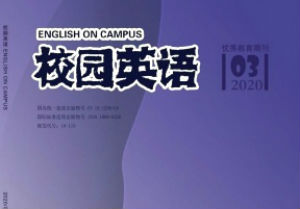bianji@xiaoyuanyingyu.com
作者:关晶予
【Abstract】 As early as the 19th century, historical comparative linguists found the cross-linguistic influence in the study of language communication. In the second language acquisition process, the use of the mother tongue is also affected by the second language. In terms of phonetics, the influence of the second language is more subtle, however in lexical, syntax, the influence of the second language is easier to observe. But both have the transition to the characteristics of the second language. In recent years, some scholars have made their efforts to study the influence of second language on mother tongue from the syntax. All these researchers improve people’s understanding of this influence. However this paper will focus on the level of lexical, the mother tongue users use politeness principles and cooperative principles to express their intentions, for instance, the localization of foreign words and the fusion of language. Some reflect the language assimilation and cultural assimilation and the spoken language feature of the second language is still used when the grammar is not allowed in their mother tongue, for instance, literally,, absolutely, anyway, apparently. And the frequent use of the second language makes it impossible to find the proper word or slightly stiff in the mother tongue at final. This paper will analyze specific phenomenon in terms of lexical in order to illustrate the influence of second language acquisition on mother tongue users.
【Key words】the second language acquisition; the influence of second language on mother tongue; the perspective of lexical level
【作者簡介】关晶予(1994.07-),女,满族,吉林人,北华大学,硕士研究生在读,研究方向:外国语言学及应用语言学。
Ⅰ. Status and syntax level analysis
In the English language, the attributive can either be placed in front of the object to be modified, or it can be placed behind the object to be modified. The exact location usually depends on the length of the attributive. But if it is attributive clause, then the clause can only be located in the modified part of its nominal ingredients, which is the formal grammar in the so-called “right to branch.” While the position of the Chinese attributive is relatively fixed, can only be located in front of the object being modified, that is, the attributive clause in Chinese is “left to branch”.
Complex sentences are common in both English and Chinese languages and are commonly referred to as positive and negative sentences in Chinese language. The difference between the two languages is mainly in the order of the main sentence and the clause. There are nine adverbial clauses in English, which are expressed in terms of adverbial clauses of cause, condition, concession, time, place, degree, purpose, comparison, manner. The position of the first three adverbial clauses can be either before the main sentence or after the main sentence. In other words, in the complex sentence in English the clause is before or behind the main sentence in the post; but in Chinese modifier-head compound sentence, the clause is usually before the main sentence. In recent years, there are more and more modifier-behind compound sentences appeared.
相关推荐
[王戈弋] Secondary Education in China
[校园英语杂志社] Differentiated Foreign Language Instruction: A Review of Eff
[校园英语杂志社] Analysis of the Theory of Second Language Learning
[校园英语杂志社] based Language Teaching and Further Pedag
[校园英语杂志社] Oral Grammar Correction in Second Language Instruction
[校园英语杂志社] An Analysis of Definitions and Views of Language
[校园英语杂志社] Based Language Teaching in Senior High school English r
[校园英语杂志社] Washback Effect of CET on English Teaching and Learning in C
[校园英语杂志社] English Language Teaching: Native English
[校园英语杂志社] Comparing Children’s First Language Acquisition and Adults’
[校园英语杂志社] Politeness in Language
[校园英语杂志社] The Study of Humorous Effects Achieved by ViolatingCooperat
[校园英语杂志社] A review on the psychology of foreign language learning and
[校园英语杂志社] The Study on How to Improve the Effectiveness of English Tea
[校园英语杂志社] In search of the effectiveness of MALL: a case study about s




